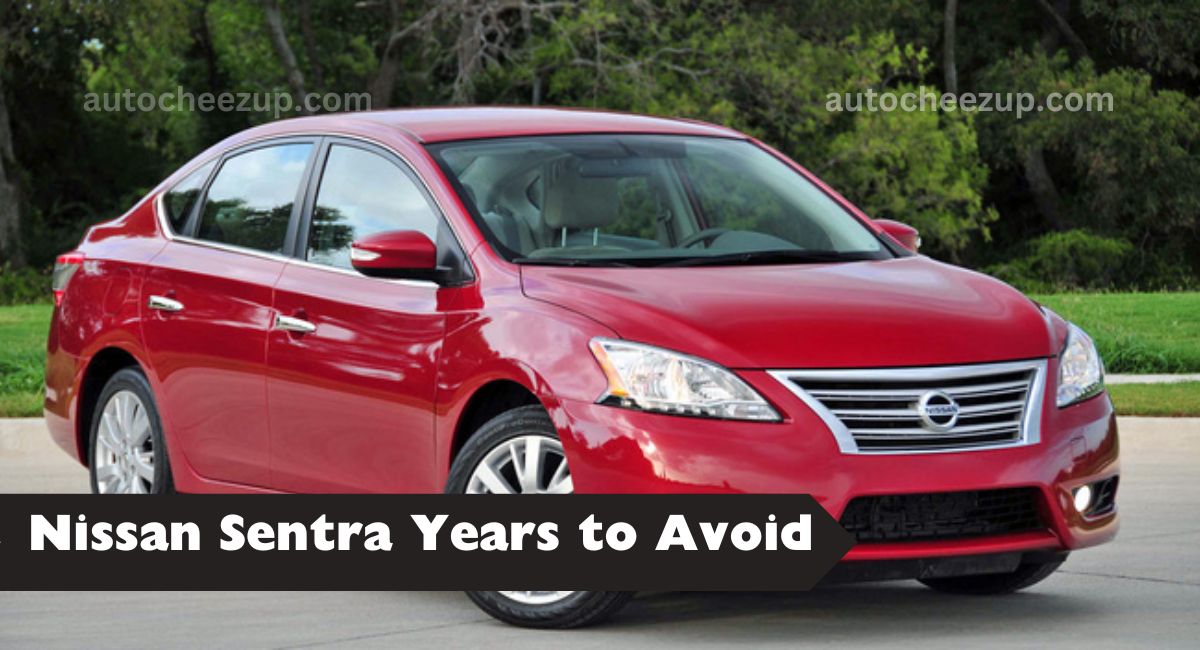The Nissan Sentra is a popular compact sedan known for its affordability, fuel efficiency, and reliability. However, like many other cars, not all model years are created equal. While some years offer excellent performance and features, others have proven problematic. If you’re planning to buy a used Nissan Sentra, it’s crucial to be aware of the years that tend to cause trouble. In this guide, we’ll explore the Nissan Sentra years to avoid, the common problems associated with them, and the best years to purchase.
Here Are the Nissan Sentra Years To Avoid
Several model years have been known for reliability issues, so it’s wise to exercise caution. Let’s take a closer look at the Nissan Sentra years you should avoid if you want a car that delivers long-term value.
2004-2005: Engine Troubles and Reliability Issues
Nissan Sentra models from 2004 to 2005 have been linked to engine troubles. Drivers have reported premature engine wear and decreased fuel efficiency. The engines in these vehicles can struggle with overheating and oil consumption, leading to costly repairs over time.
H3: 2008: Transmission and Wheel Defects
The 2008 Nissan Sentra had significant issues with its transmission. Many users faced abrupt gear shifts and failure of the CVT system. Additionally, complaints about wheel defects, including uneven tire wear and vibration, made driving uncomfortable and hazardous.
H3: 2012-2015: Plagued by CVT Failures
The CVT (Continuously Variable Transmission) used in these model years proved to be problematic. Drivers frequently reported jerky acceleration, slipping gears, and the transmission overheating. These issues led to expensive repairs and loss of trust in the vehicle’s longevity.
H3: 2016-2017: Lingering Transmission Concerns
Although improvements were made in newer models, 2016-2017 Sentras still faced lingering transmission concerns. Shifting problems, including hesitation and shudders, were prevalent. Drivers also reported that the transmission would unexpectedly stall, making it unsafe on highways.
Common Problems in These Model Years

While certain years present greater risk, it’s important to be aware of the common problems associated with these vehicles. Below, we dive into some of the recurring issues found in the Nissan Sentra, which buyers should keep an eye out for.
H3: Transmission Issues
The Nissan Sentra, especially in older models, struggles with transmission reliability. Many drivers experience abrupt shifts and delayed acceleration. The CVT system in particular has been identified as a common culprit, often leading to breakdowns and costly repairs.
H3: Engine Problems
Engine issues are a consistent problem in several Sentra models. From decreased performance to frequent overheating, the engines tend to wear out faster than anticipated. Oil leaks and poor combustion lead to inefficient fuel use and potential long-term engine damage.
H3: Brake and Steering Defects
Brake and steering defects have been a major concern in some Sentra models. Drivers have complained about premature brake wear, vibrations in the steering wheel, and loss of control while turning. These issues compromise both safety and driving comfort.
H3: Electrical System Failures
Electrical problems have also plagued Nissan Sentra models. Drivers report inconsistent behavior in the power windows, malfunctioning sensors, and flickering dashboard lights. These issues can lead to frustrating inconveniences and, in some cases, expensive replacements.
H3: Recurring Maintenance Costs
Nissan Sentra owners often face recurring maintenance costs. From frequent oil changes to the need for ongoing transmission fluid replacement, these cars tend to demand more than the average vehicle in terms of upkeep.
H2: Recommended Nissan Sentra Years
While some years should be avoided, others provide a much smoother driving experience. If you want a dependable Nissan Sentra, it’s essential to focus on the models known for balanced performance and modern features.
H3: 2011: Balanced Performance and Reliability
The 2011 Nissan Sentra stands out as one of the most reliable options. It offers a balance between affordability and performance, with fewer transmission problems and fewer engine failures. Its engine efficiency is commendable, making it a great pick for long-term ownership.
H3: 2018-2020: Modern Features and Enhanced Safety
The newer Sentra models from 2018 to 2020 boast modern technology and enhanced safety features. These years brought significant upgrades to the interior, exterior, and overall build quality. Drivers report fewer transmission issues and better fuel efficiency compared to earlier years.
H3: 2021 and Beyond: Redesigned and Reliable
The latest models from 2021 and beyond have been redesigned to focus on reliability. With improvements to engine design and transmission, these Sentras offer a more refined driving experience. They are well-equipped to handle everyday commutes with minimal mechanical concerns.
H3: 2007: A Budget-Friendly Option
If you’re looking for a budget-friendly Nissan Sentra, consider the 2007 model. Though older, this version still offers solid performance and fuel efficiency at a lower price point. It’s a great choice for those seeking a reliable vehicle on a tight budget.
Frequently Asked Questions
What Nissan Sentra years should I avoid?
Avoid the 2004-2005, 2008, 2012-2015, and 2016-2017 Nissan Sentra models due to engine, transmission, and reliability issues.
What are common problems in these models?
Common problems include transmission failures, engine overheating, brake defects, electrical system malfunctions, and high maintenance costs.
Which Nissan Sentra years are recommended for reliability?
Consider the 2011, 2018-2020, 2021 and beyond models for better performance, modern features, and fewer mechanical issues.
Are parts interchangeable between different Sentra models?
Yes, certain parts, like engines and transmissions, are compatible between models from 2011-2019, but it’s important to verify with reliable sources.
What improvements were made to the 2.5L engine?
The 2.5L engine in post-cat years (2011 onwards) features design updates that enhance durability, efficiency, and reliability.
Conclusion
In conclusion, while the Nissan Sentra is a practical and economical choice, it’s essential to be aware of the model years prone to issues. By avoiding the problematic years like 2004-2005, 2008, and 2012-2017, and opting for more reliable options like the 2011, 2018-2020, or newer models, you can enjoy a dependable driving experience. Always do your research and prioritize models with modern features, better build quality, and fewer mechanical problems.
